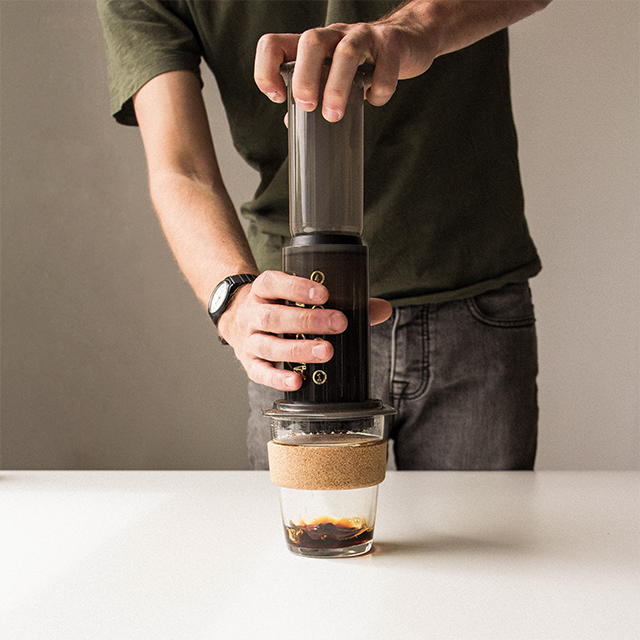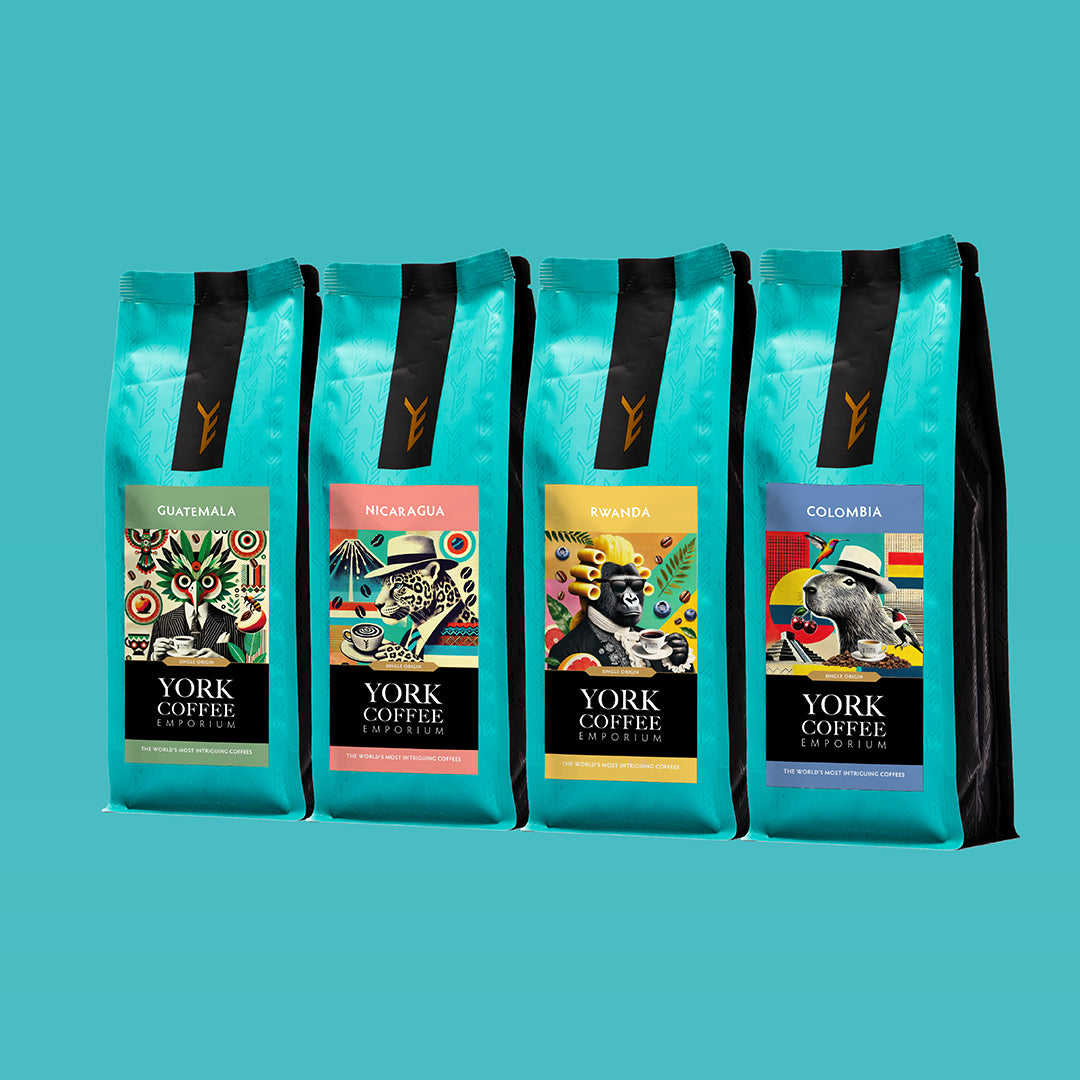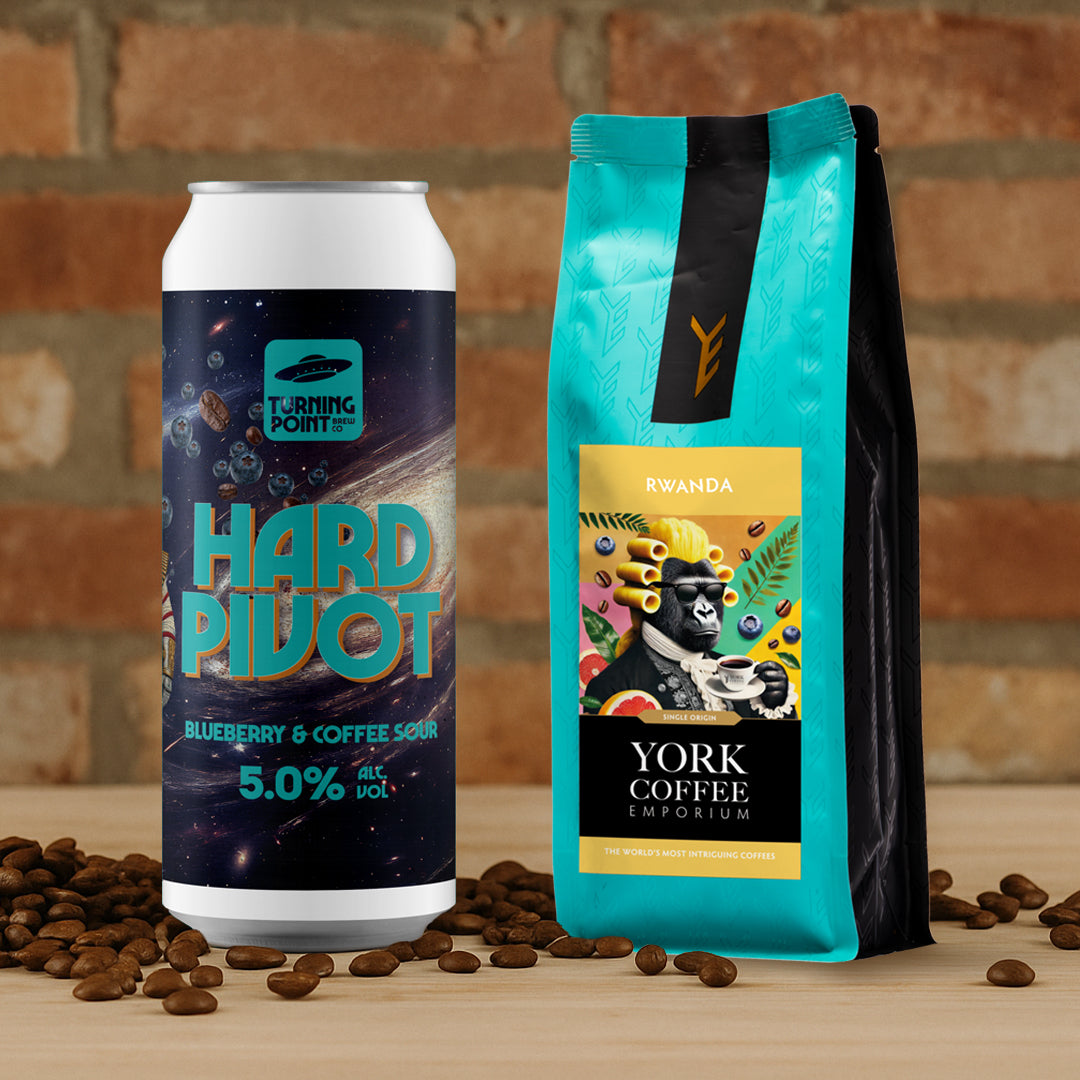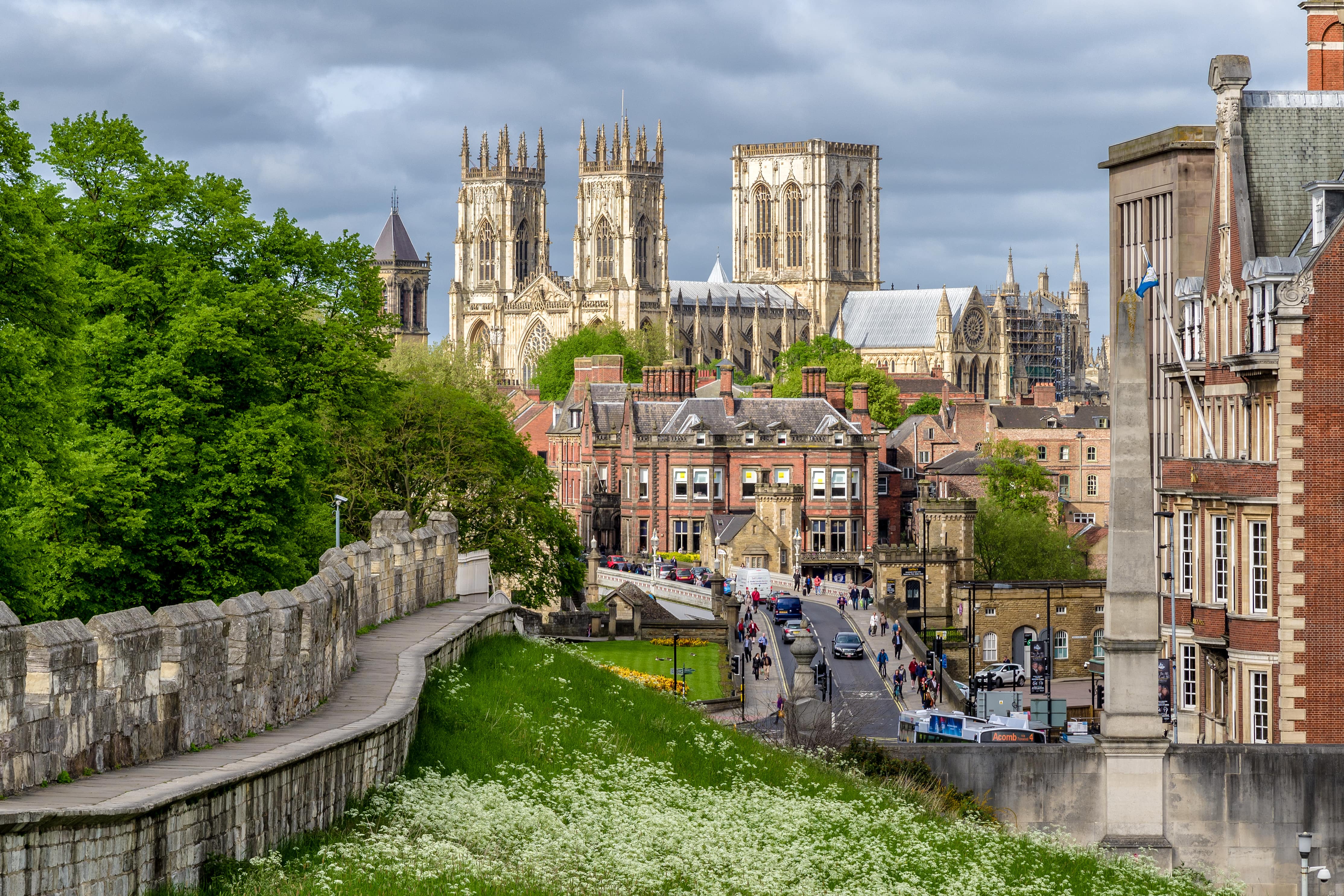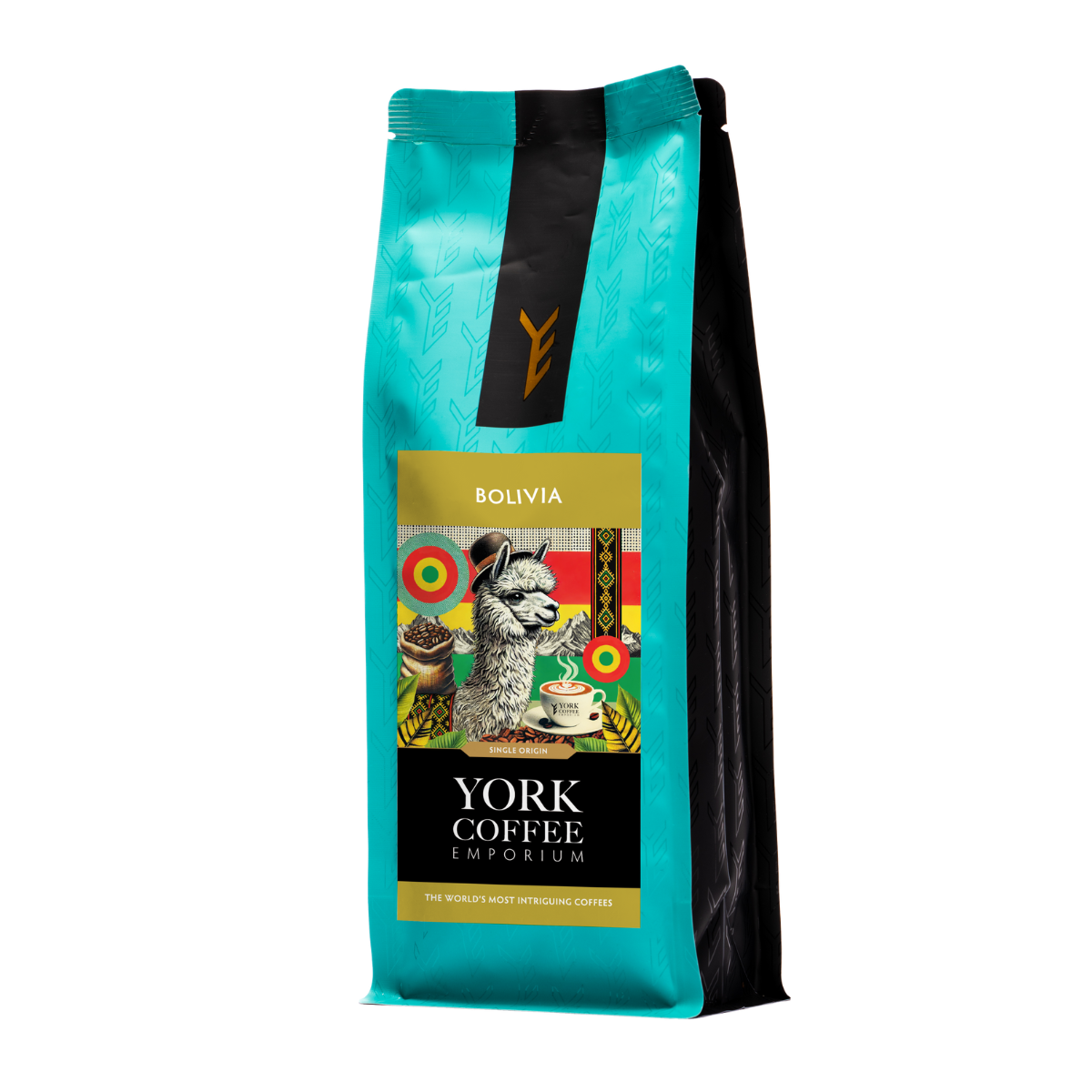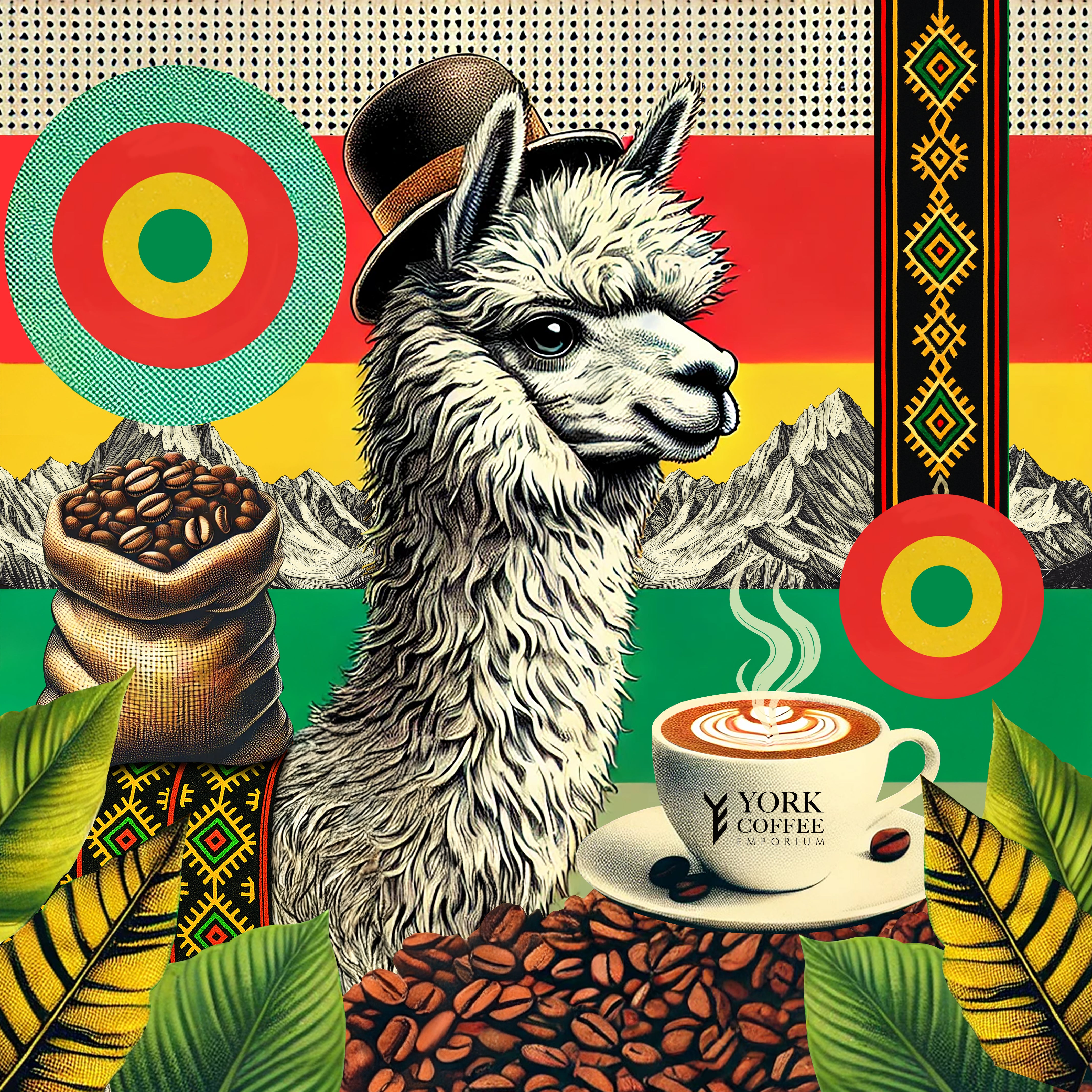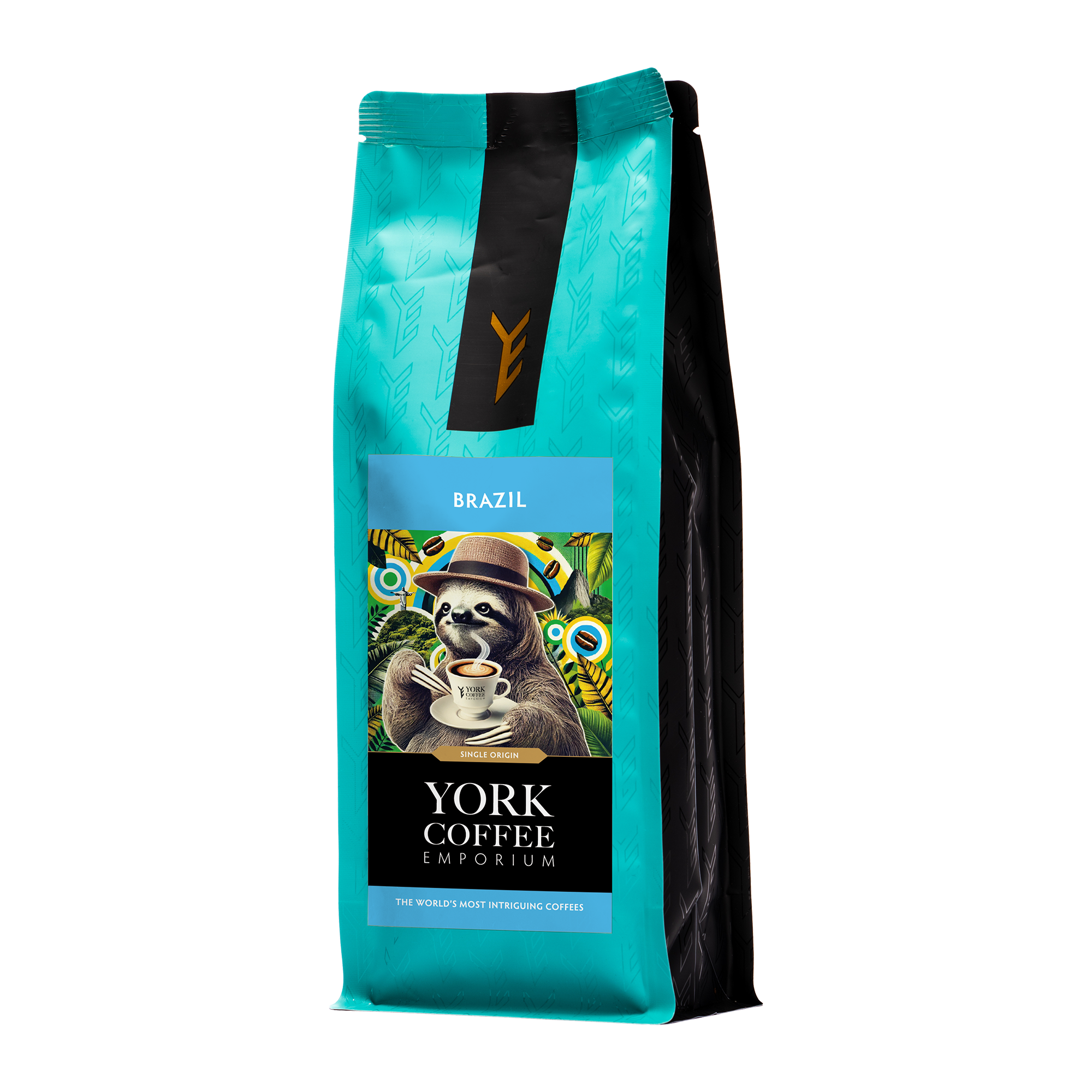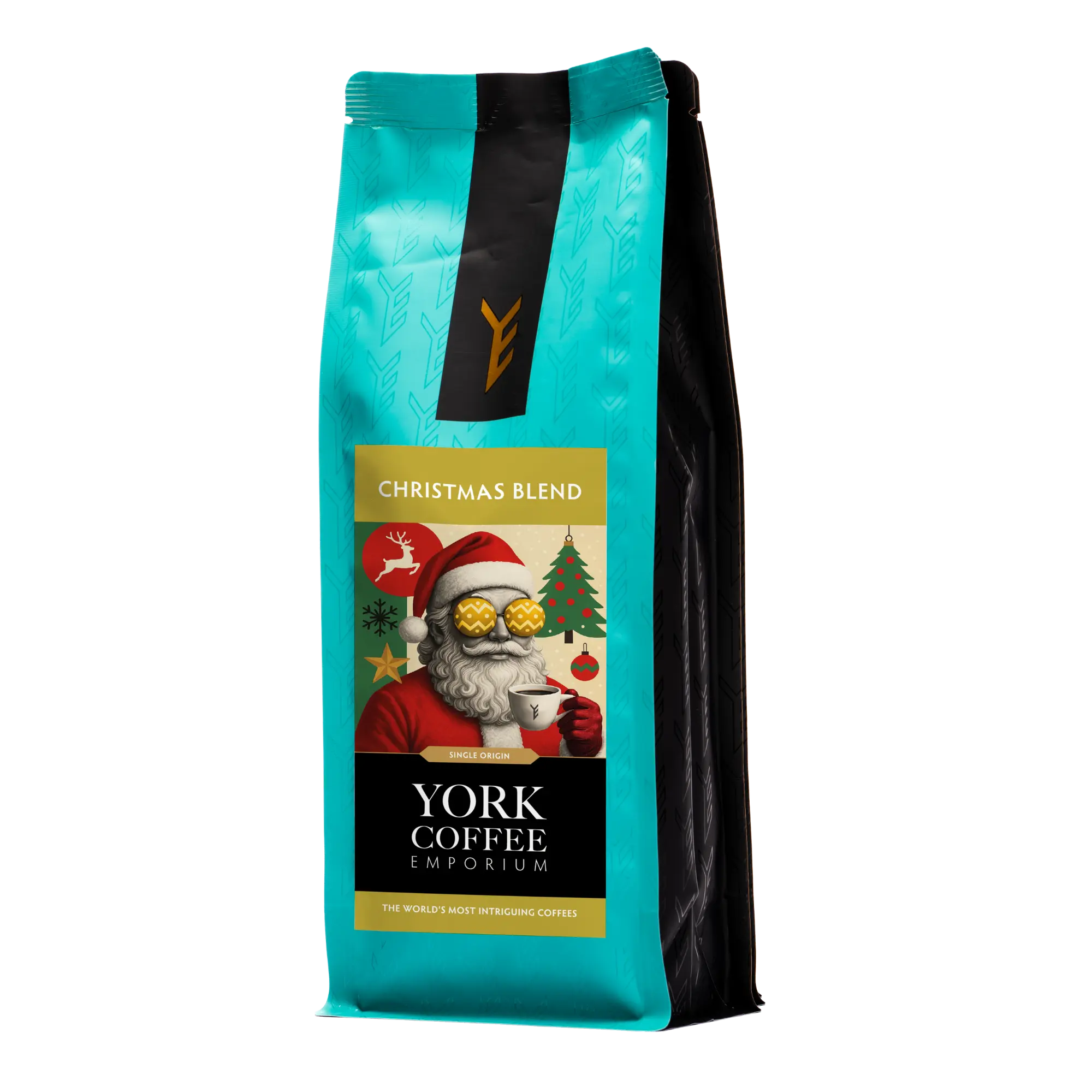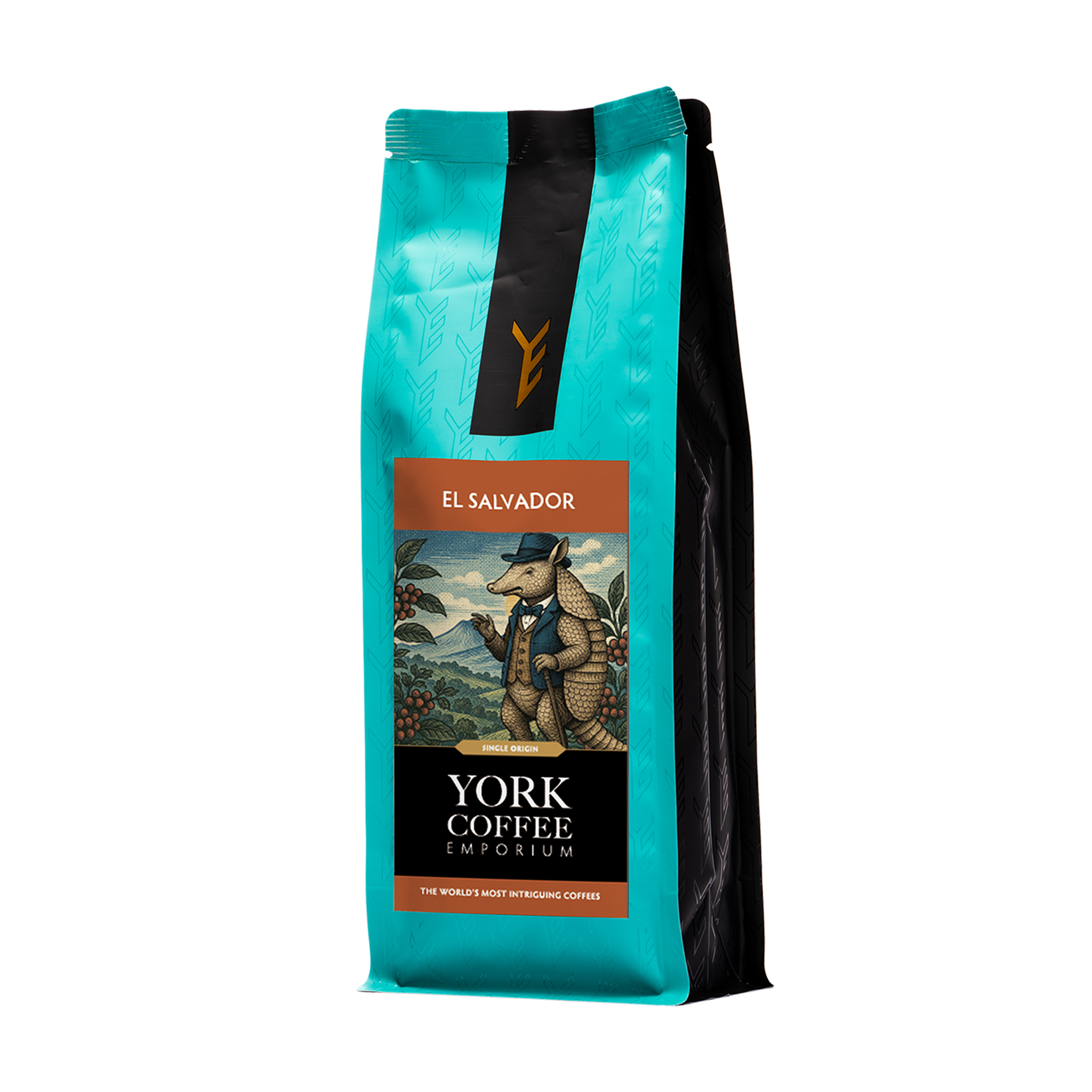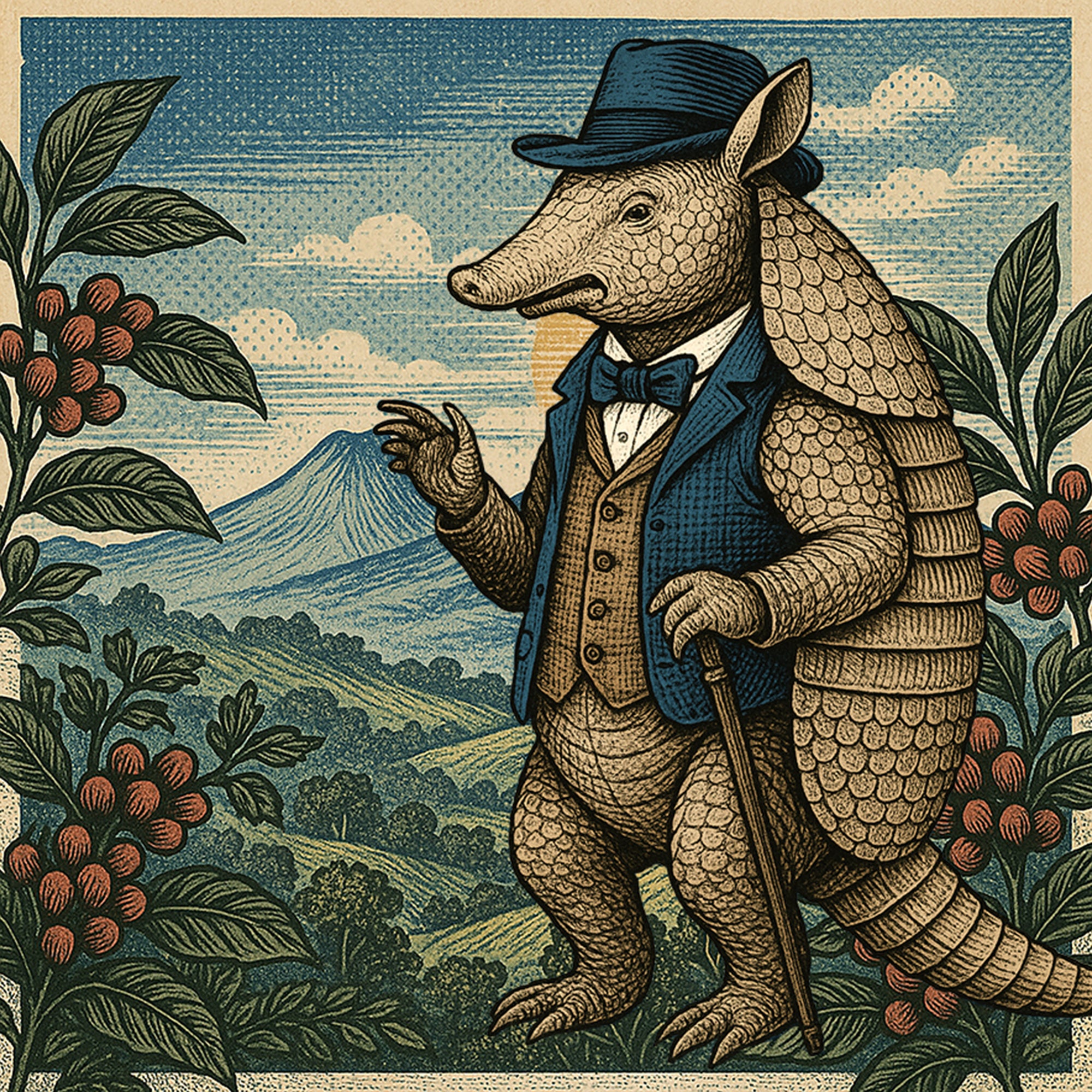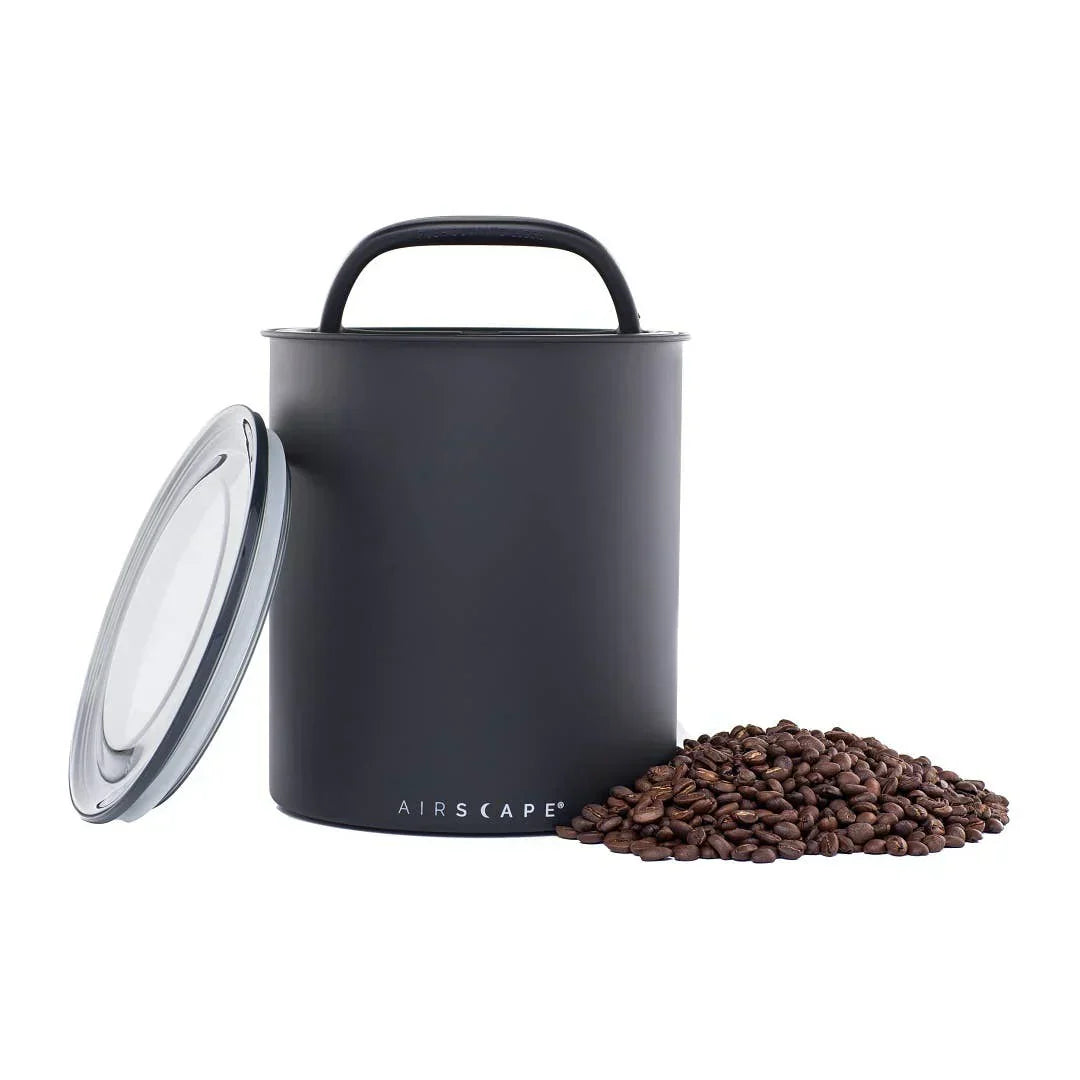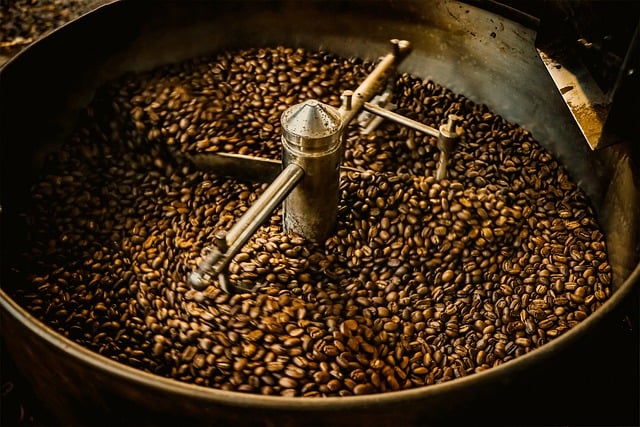
How The Roasting Process Influences Coffee Flavour

Coffee lovers often marvel at the complexity of flavours in a single cup — from fruity and floral notes to earthy, nutty, or chocolatey undertones. But behind those flavours lies a crucial step: the coffee roasting process, which transforms raw green beans into the aromatic, flavour-packed brew we enjoy daily.
As blended and single origin coffee roasters, understanding how roasting influences the character of each bean is vital to delivering a truly exceptional cup. In this guide, we’ll break down the science and artistry behind roasting, exploring how different roast levels affect flavour and how we perfect both blends and single origins at York Emporium.
The basics of coffee roasting
Roasting is a heat-driven process where green coffee beans are exposed to high temperatures, causing a series of chemical and physical changes. As the beans heat up, they lose moisture, caramelise sugars, and undergo the Maillard reaction — all of which contribute to the depth and richness of the coffee flavour.
Each coffee roast level (light, medium, or dark) brings out different flavour profiles:
- Light roasts highlight the bean’s origin and natural acidity
- Medium roasts offer balance and body
- Dark roasts produce bold, smoky, or bittersweet flavours.
If you enjoy crisp acidity and cocoa depth, Colombia Papayo is a perfect example of how light-to-medium roast levels showcase single origin brilliance.
Single origin coffee vs. blended coffee
There’s a key difference in how single origin and blended coffee beans respond to the roasting process.
Single origin coffee
Single origin beans come from a single region — sometimes a single farm — and are prized for their distinct flavour profiles, shaped by terroir (soil, climate, and altitude). These beans often shine with a light or medium roast, which helps preserve their origin-specific characteristics such as fruity, floral, or wine-like notes.
Roasting single origin coffee is a careful balancing act. Roast too little, and the flavour may be underdeveloped; too much, and the origin character gets lost.
Blended coffee
Blends are made by combining beans from different regions to create a balanced flavour profile. A well-crafted roasted coffee blend might pair bright, fruity beans with chocolatey, full-bodied ones, offering a cup with more complexity and consistency.
At York Emporium, we always roast the components of a blend separately, allowing each origin to be roasted to its ideal profile before blending post-roast. This ensures no flavour is lost or compromised during the process.
Coffee roast levels and flavour explained
Here’s how different roast levels affect taste and mouthfeel:
Light roast coffee
- Roasted until the “first crack”
- Preserves the original character of the bean
- Notes: citrus, berry, floral, bright acidity
- Common in single origin coffee to showcase terroir
Medium roast coffee
- Roasted slightly beyond the first crack
- Balance between origin flavour and roast development
- Notes: caramel, nuts, mild fruit, chocolate
- Suitable for both single origins and blends
Dark roast coffee
- Roasted beyond the “second crack”
- Dominated by the roast flavour rather than origin
- Notes: cocoa, smoke, toasted sugar, spice
- At York Emporium, we focus on light-to-medium roasts to preserve natural bean flavour rather than mask it with smoke or bitterness
Why blends benefit from expert roasting
Different beans respond differently to heat. Some have higher sugar content, while others are oilier or denser — meaning they require unique roasting conditions to bring out the best in them.
That’s why our coffee blends are carefully designed. We:
- Select origins for contrast and balance
- Roast each origin separately to the ideal profile
- Combine post-roast to create a rich, layered cup
This allows us to offer blended coffees that are consistent, approachable, and packed with flavour — ideal for those seeking a smooth, balanced everyday brew.
Looking for a smooth, consistent blend with a well-rounded profile? Try our House Espresso Blend — a customer favourite that shows how roasting individual beans before blending brings out the best in each origin.
Our roasting approach at York Emporium
At our Yorkshire-based roastery, we take a precision-focused approach to roasting:
- Monitoring temperature, time, and airflow
- Adjusting roast profiles for each origin and purpose
- Roasting single origin beans to highlight nuance
- Roasting blends separately before combining to maximise clarity and balance
Whether we’re working with a small-lot Ethiopian or building a house espresso blend, we roast to bring out each coffee’s unique flavour profile — from crisp and bright to smooth and chocolatey.
Why roast levels matter
The roasting process plays a key role in how your coffee tastes — just as much as the origin or brew method. Understanding the difference between light roast single origin coffee and medium roast blends helps you choose the right flavour profile for your palate.
For something special, our Roasters Reserve series offers small-batch microlots where we fine-tune the roast profile to highlight exceptional flavour.
At York Emporium, our commitment to careful roasting ensures you experience the best of each bean — whether you enjoy a zesty African single origin or a velvety, well-rounded blend.


